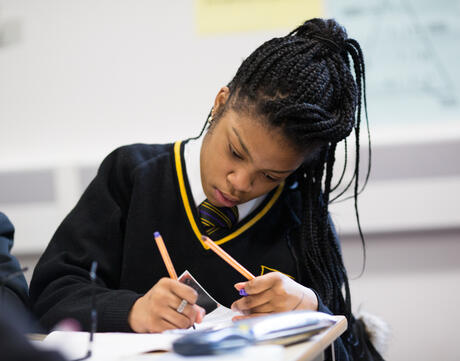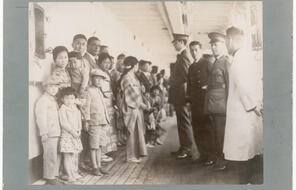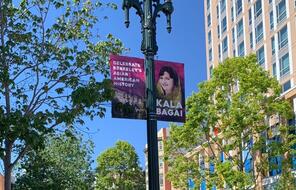
Addressing Islamophobia in the Media
Overview
About This Lesson
This is the third lesson in a unit designed to help teachers have conversations with their students about contemporary Islamophobia in a safe, sensitive and constructive way. Use these lessons to help your students reflect on Islamophobia – how it manifests in contemporary society and its impact – and consider what needs to be done to challenge it.
In this lesson, students explore how Islamophobia manifests and is spread in the media, both in the news and in the entertainment industry. In the first part of the lesson, the activities provide students with the opportunity to reflect on media bias; to explore literary devices used in the media to provoke emotional reactions and spread Islamophobia; to analyse the portrayal of Muslims and Islam in the media; and to reflect on how humanity’s negativity bias impacts responses to Islamophobic news content. In the second part of the lesson, students reflect on film as an art medium; discuss the representation of Muslims and Islam in the film industry; consider the impact of this representation; and finally reflect on what shapes people’s responses to Muslims and Islam.
Giving students the opportunity to reflect on media bias helps students be critical consumers of news, who understand that journalists and organisations are not objective in how they report stories, while teaching students about the literary devices used to spread Islamophobia helps students understand how language can be used to shape and provoke certain reactions in audiences. Applying this learning to analysing Islamophobic news content can help students understand the real-world relevance of what they are learning, while teaching students about humanity’s negativity bias helps them consider the consequences of exposure to Islamophobic news content.
Encouraging students to reflect on film as an art medium helps them to think about its capacity to shape people’s views beyond the cinema, which is reinforced by sharing statistics on Muslim representation in film and its possible impacts. Moreover, giving students the chance to learn about the effect that Islamophobia has on some Muslims in the film industry can help them understand the human cost of Islamophobia. Finally, inviting students to reflect on what shapes people’s responses to Muslims and Islam highlights how the stories we consume in day-to-day life impact people’s world views.
We recommend that you do preparatory work on discussing Islamophobia and Islamophobic tropes by teaching the lessons Confronting Islamophobia and Exploring Islamophobic Tropes if you have not already done so.
We also recommend that you revisit your classroom contract before teaching this lesson. If you do not have a class contract, you can use our contracting guidelines for creating a classroom contract or another procedure you have used in the past.
Preparing to Teach
A Note to Teachers
Before teaching this lesson, please review the following information to help guide your preparation process.
Lesson Plans
Activities: Part I
Activities: Part II
Extension Activities
Materials and Downloads
Resources from Other Organisations
Addressing Islamophobia in the Media
Exploring Islamophobic Tropes
Understanding Gendered Islamophobia
Unlimited Access to Learning. More Added Every Month.
Facing History & Ourselves is designed for educators who want to help students explore identity, think critically, grow emotionally, act ethically, and participate in civic life. It’s hard work, so we’ve developed some go-to professional learning opportunities to help you along the way.
Exploring ELA Text Selection with Julia Torres
On-Demand

Working for Justice, Equity and Civic Agency in Our Schools: A Conversation with Clint Smith
On-Demand

Centering Student Voices to Build Community and Agency
On-Demand

















